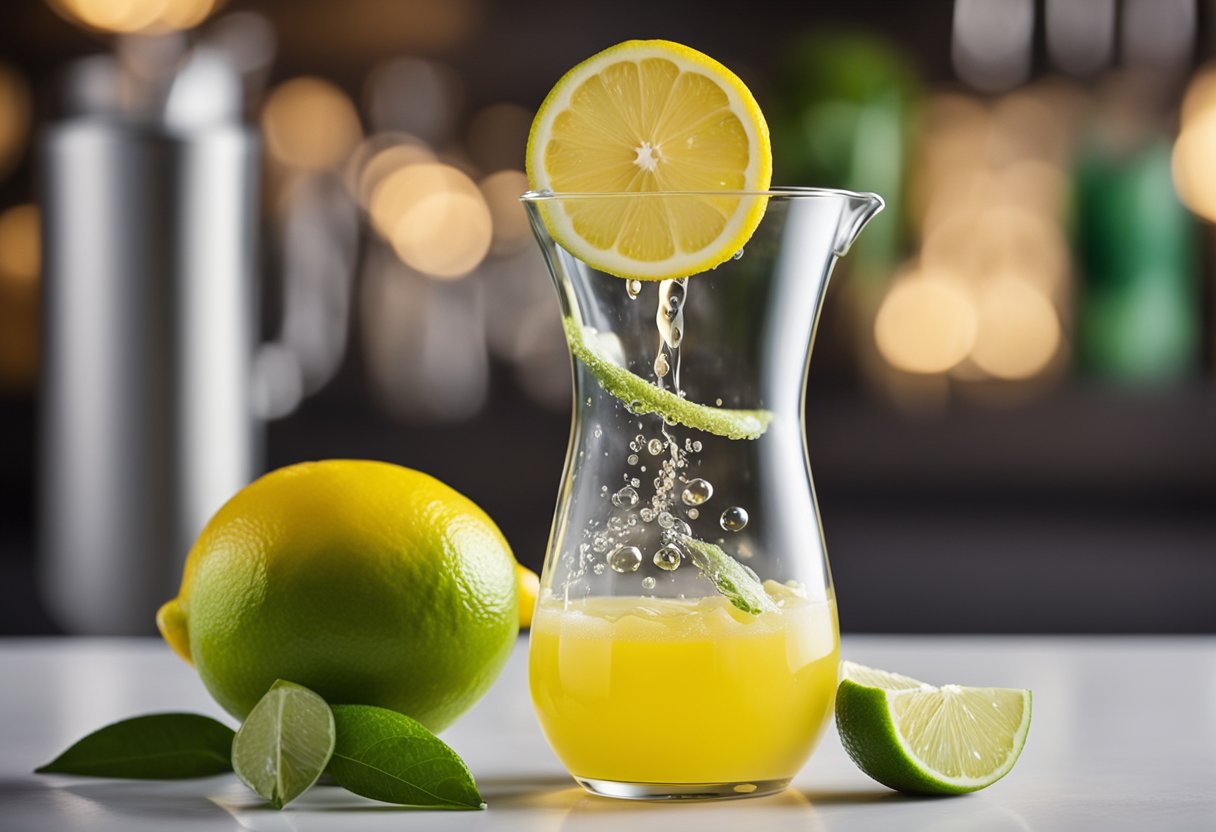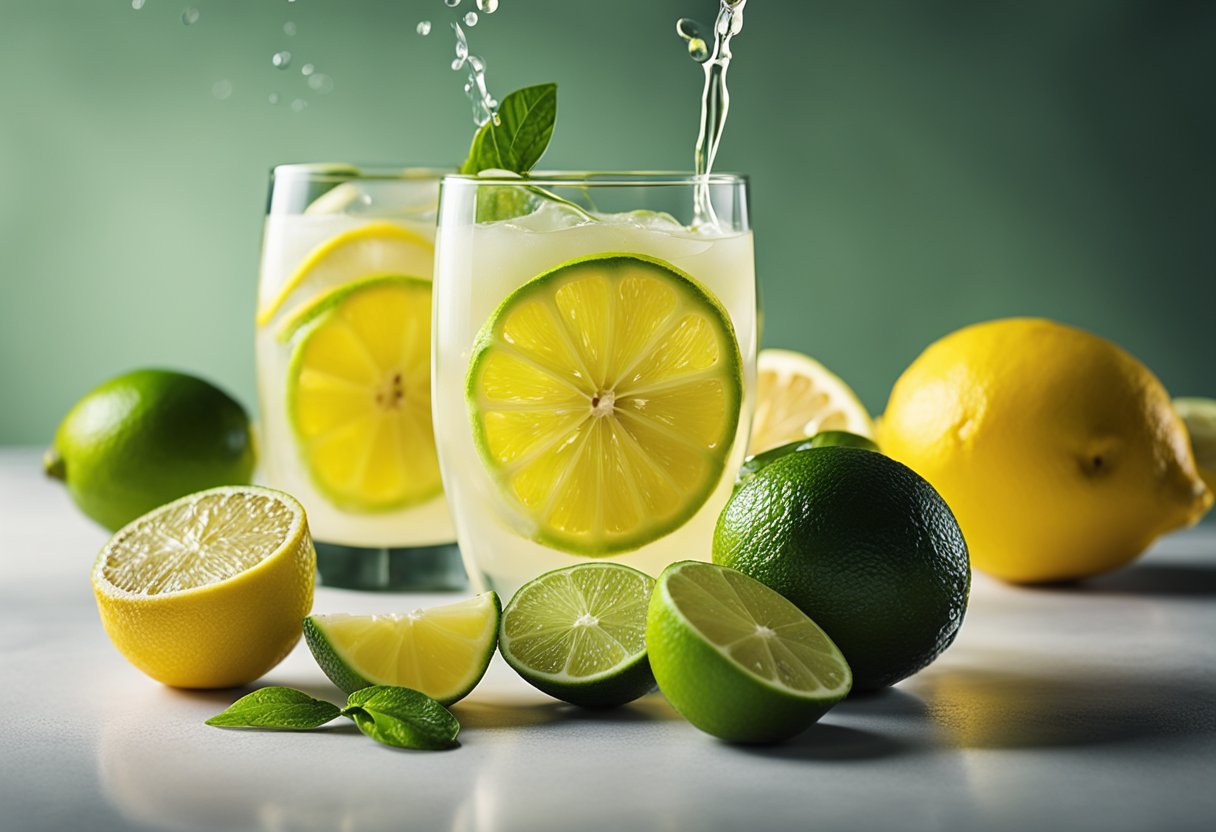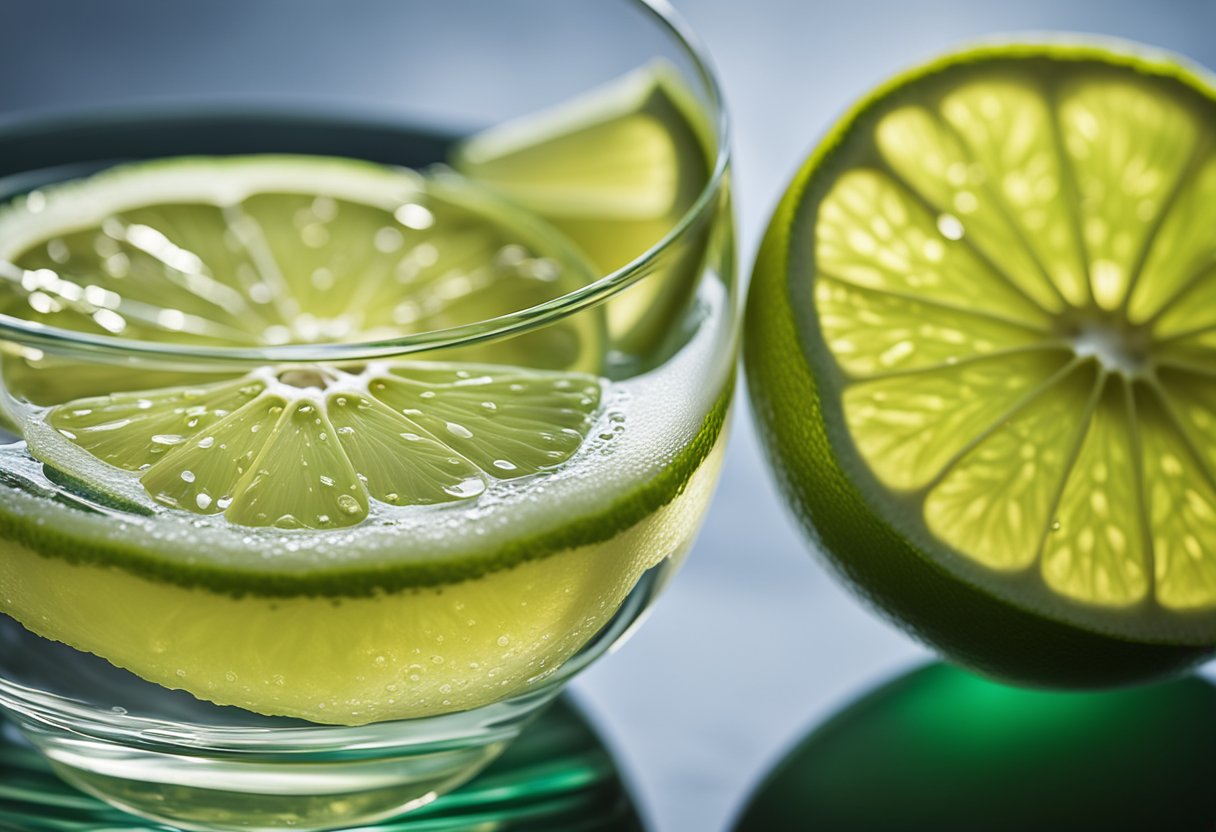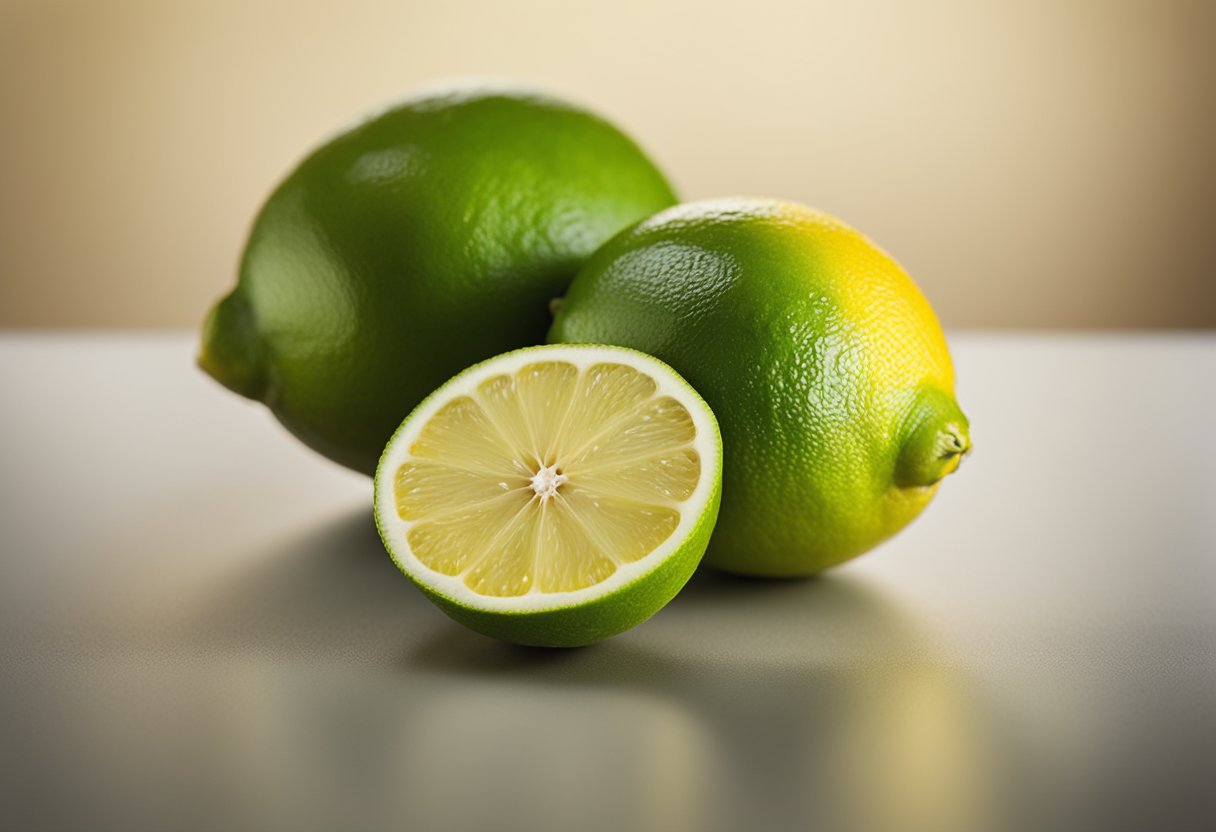Lemons and limes are both popular citrus fruits known for their vibrant flavors. You might have wondered about their acidity levels, and while they share many similarities, there are subtle differences in their acidic properties.

When you taste a lemon or a lime, the strong, tangy flavor is due to the citric acid content, which is high in both fruits. However, lemons generally have slightly higher citric acid levels, which can give them a more sour taste compared to limes. This difference in acidity can affect not just the taste but also how these fruits are used in cooking and baking.
Chemical Properties of Lemon and Lime

Lemons and limes are both citrus fruits rich in vitamin C, but they exhibit some differences in their chemical makeup.
pH Levels:
You’ll find that lemons have a pH range of about 2.00 to 2.60, making them slightly more acidic than limes, which typically range from 2.00 to 2.80. Even with this small range, your taste buds might distinguish the slightly greater tartness of a lemon.
Citric Acid Content:
The star of the show in these fruits is citric acid. Lemons contain a higher concentration, with about 5% to 6% citric acid by weight. In contrast, limes have around 4% to 5%.
Ascorbic Acid (Vitamin C):
Vitamin C is a key antioxidant in both fruits. You’ll receive about 53 mg of vitamin C per 100 grams of lemon juice, and limes provide close to 29 mg per 100 grams.
Table Summarizing Key Chemical Properties:
| Property | Lemon | Lime |
|---|---|---|
| pH | 2.00 – 2.60 | 2.00 – 2.80 |
| Citric Acid | 5% – 6% (by weight) | 4% – 5% (by weight) |
| Vitamin C | 53 mg/100g (juice) | 29 mg/100g (juice) |
Each fruit contains essential oils—limonene being the predominant one—that contribute to their distinct aromas. Your lemon zest will have a higher percentage of limonene compared to lime zest.
Culinary Uses and Flavor Profiles

Lemons and limes are used in various recipes because of their distinctive sour notes and zest.
Lemons:
- Salad Dressings: Add fresh lemon juice to vinaigrettes for a zesty kick.
- Seafood: Squeeze lemon over fish to help neutralize any fishy taste.
- Baking: Lemon zest can bring a refreshing tang to cakes and cookies.
- Preserving: Lemon juice’s high acidity is great for canning and preserving food.
Limes:
- Cocktails: A squeeze of lime is essential in mojitos and margaritas.
- Asian Dishes: Lime juice is often used in Thai and Vietnamese recipes.
- Salsas and Marinades: Lime adds a tropical twist to salsas and enhances meat flavors.
- Guacamole: A hint of lime juice keeps your guacamole vibrant and tasty.
When it comes to flavor, lemons are bright and tangy while limes are more bitter and complex. Below is a table summarizing their flavor profiles:
| Citrus | Flavor Notes | Acidity Level | Best Used For |
|---|---|---|---|
| Lemons | Bright, tangy, slightly sweet | High | Seafood, baked goods, dressings |
| Limes | Bitter, complex, tangy | Slightly lower | Tropical dishes, cocktails |
Health Benefits and Nutritional Differences

Lemons and limes are both excellent sources of Vitamin C and have unique antioxidant properties.
Vitamin C Content
- Lemons: typically provide about 53 mg of Vitamin C per 100 g.
- Limes: usually offer around 29 mg of Vitamin C per 100 g.
When you’re looking to boost your Vitamin C intake, incorporating lemons into your diet might be more beneficial than limes due to their higher Vitamin C content.
Antioxidant Properties
Both lemons and limes are rich in antioxidants, though they contain different types:
- Lemons: high in flavonoids which can help protect your cells and improve heart health.
- Limes: contain unique antioxidants like ferulic acid, which may have antibacterial and anti-cancer properties.
Agricultural and Harvesting Variations

When you grow lemons and limes, several factors influence their acidity, such as the climate, soil type, and care given during the growing process.
Climate: Lemons thrive in a moderate, Mediterranean-like climate, while limes prefer a more tropical environment. Your choice of location impacts the fruit’s acidity.
- Lemons: Mild, cooler climate
- Limes: Warmer, tropical climate
Soil: The pH and nutrient content of the soil can affect the acidity of the fruits. Well-draining soil rich in organic matter benefits both lemon and lime trees, yet they’ll slightly differ in their soil pH preferences.
- Lemons: Prefer slightly acidic to neutral soil (pH 6.0-7.0)
- Limes: Tend to tolerate a wider pH range
Watering Needs: Consistent watering helps maintain soil moisture levels, ensuring lemons and limes develop their characteristic acidic flavors. Over or under-watering can stress the plant, altering the fruit’s taste.
- Lemons: Regular, even watering
- Limes: Slightly more tolerant to irregular watering
Harvesting Time: The acidity of lemons and limes can also be influenced by when you harvest them. Generally, the longer they stay on the tree, the less acidic they become.
- Lemons: Can be picked once they attain full size and show a deep yellow color.
- Limes: Best harvested when they are green and slightly soft to the touch.
Frequently Asked Questions

How do the vitamin C contents of lemons and limes compare?
While both fruits are excellent sources of vitamin C, lemons contain slightly more vitamin C than limes. For example, a medium-sized lemon offers about 30% more vitamin C than a lime of the same size.
Are there any distinct differences in the effects of lemon and lime water when consumed in the morning?
The differences in effects are minimal. Both can have a refreshing, energizing impact and aid digestion, but there are no significant differences aside from the subtle taste variation.
Regarding weight loss, does opting for lemon over lime (or vice versa) make a difference?
Neither lemon nor lime has significant advantages when it comes to weight loss. Your focus should be on overall healthy eating patterns and lifestyle rather than choosing between these two fruits.
